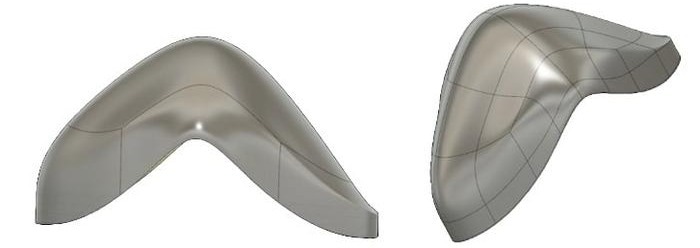In a recent study published in the journal Frontiers in Space Technology, Cornell University researchers explained the design of “stillsuits.” Researchers have designed this for astronauts because in space they must urinate inside the spacesuits. Urine from spacewalks is not recycled, which makes it not only filthy and uncomfortable for the user but also wasteful. This is in contrast to wastewater treated on board the International Space Station (ISS).
 Urine collection cups for the Maximum Absorbency Garment for men. Image Credit: Luca Bielski
Urine collection cups for the Maximum Absorbency Garment for men. Image Credit: Luca Bielski
Full-body “stillsuits,” similar to those in the popular Dune film series, may be a solution to these problems because they absorb and clean water lost through perspiration and sweating and recycle it into potable water.
With the development of a revolutionary urine collection and filter system for spacesuits, this science fiction is now about to become a reality.
The design includes a vacuum-based external catheter leading to a combined forward-reverse osmosis unit, providing a continuous supply of potable water with multiple safety mechanisms to ensure astronaut wellbeing.
Sofia Etlin, Study First Author and Research Staff Member, Cornell University
Designed for Upcoming Moon and Mars Missions
NASA is preparing for the Artemis II and III missions, which will send a crew into orbit around the Moon and land on its south pole, respectively, in 2025 and 2026. By the early 2030s, crewed missions to Mars are predicted to follow these expeditions.
The Maximum Absorbency Garment (MAG), a waste management system for classic NASA spacesuits that has been in use since the late 1970s, has long been criticized by astronauts for being unhygienic and uncomfortable. It is essentially a multi-layered adult diaper composed of superabsorbent polymer.
The MAG has reportedly leaked and caused health issues such as urinary tract infections and gastrointestinal distress. Additionally, astronauts currently have only 1 l of water available in their in-suit drink bags. This is insufficient for the planned, longer-lasting lunar spacewalks, which can last ten hours, and even up to 24 hours in an emergency.
Sofia Etlin, Study First Author and Research Staff Member, Cornell University
In addition, astronauts have asked that future spacesuits include a separate supply of high-energy, non-caffeinated drinks and shorten the time required to fill and degas the in-suit drink bags.
Etlin and associates have now created a urine collection apparatus, which includes an undergarment composed of many layers of flexible fabric, with all of these goals in mind. This attaches to a collection cup made of molded silicone that fits around the genitalia and comes in different sizes and shapes for men and women.
The interior of the collection cup features either polyester microfiber or a nylon-spandex blend, designed to pull urine away from the body towards the cup's inner surface. A vacuum pump then draws the urine, triggered by an RFID tag connected to an absorbent hydrogel that activates upon detecting moisture.
High-Tech Backpack
After being collected, the urine is directed to the urine filtration system, where a two-step, combined forward and reverse osmosis filtration system recycles it with an 87% efficiency. This employs a pump to extract the water from the salt and a concentration gradient to extract the water from the pee.
After being enhanced with electrolytes, the filtered water is pumped back into the in-suit drink bag, where it can be consumed. In just five minutes, 500 ml of urine may be collected and purified.
A 40 amp-hour 20.5 V battery powers the system, which combines control pumps, sensors, and a liquid-crystal display screen. It weighs about 8 kg and measures 38 by 23 by 23 cm in total, making it small enough to be transported.
With the prototype now in hand, the new design may be evaluated in simulated environments and then in actual spacewalks.
Our system can be tested in simulated microgravity conditions, as microgravity is the primary space factor we must account for. These tests will ensure the system’s functionality and safety before it is deployed in actual space missions.
Dr. Christopher E Mason, Professor and Study Lead Author, Cornell University
Journal Reference:
Etlin, S., et al. (2024) Enhanced astronaut hygiene and mission efficiency: a novel approach to in-suit waste management and water recovery in spacewalks. Frontiers in Space Technologies. doi.org/10.3389/frspt.2024.1391200.